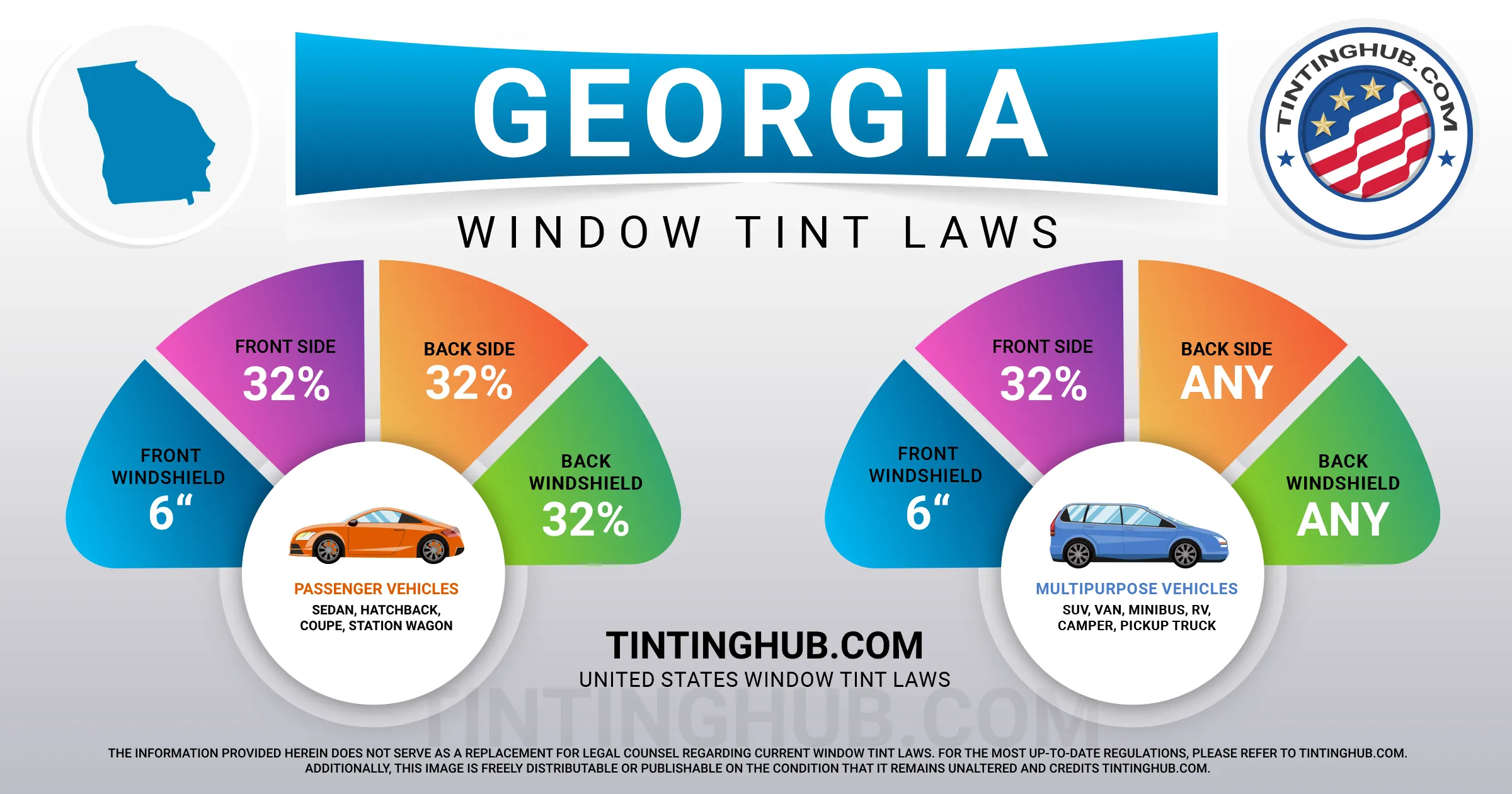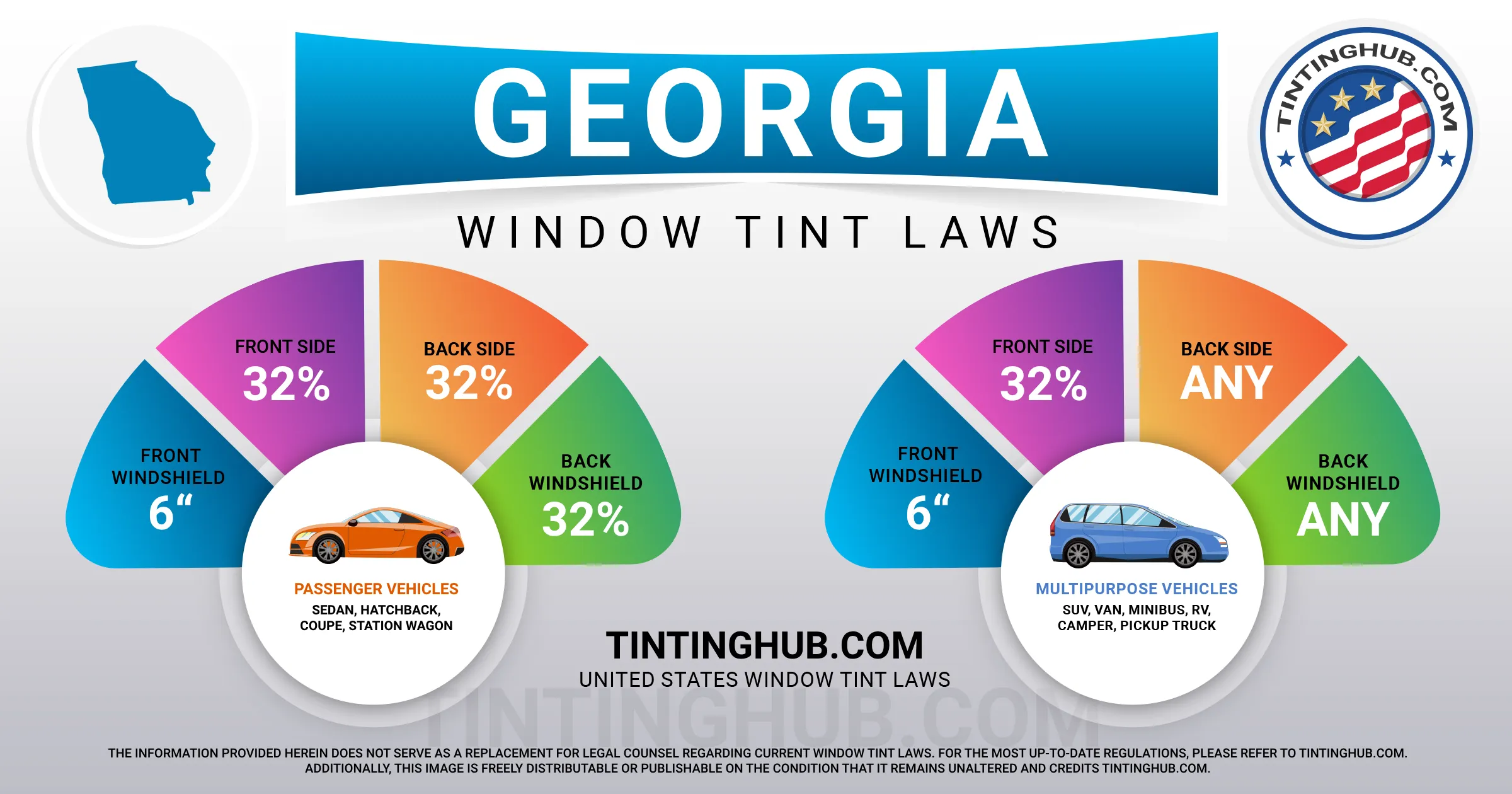Georgia Window Tint Laws (Last Update 2024)

When it comes to car window tinting laws, Georgia established its regulations in 2005. In this comprehensive guide, we’ll delve into the specifics of window tint darkness, reflection, and other crucial regulations that every Georgia car owner must know. Ensuring your car’s window tint complies with these rules is vital to avoid penalties and legal issues.

Window Tint Darkness: What You Need to Know
The darkness of your car’s window tint is measured by VLT, or Visible Light Transmission. Georgia’s regulations are precise and differ for sedans and SUVs or vans. Let’s break it down:
Tint Darkness for Sedans:
- Windshield: Non-reflective tint is allowed on the top 6 inches of the windshield.
- Front Side Windows: Must allow more than 32% of light in.
- Back Side Windows: Must allow more than 32% of light in.
- Rear Window: Must allow more than 32% of light in.
Tint Darkness for SUVs and Vans:
- Windshield: Non-reflective tint is allowed on the top 6 inches of the windshield.
- Front Side Windows: Must allow more than 32% of light in.
- Back Side Windows: Any level of darkness is permissible.
- Rear Window: Any level of darkness is permissible.
Window Tint Reflection in Georgia
Window tint can significantly affect incoming light, reducing glare and heat inside the vehicle. Georgia’s laws also regulate the level of tint reflection:
Tint Reflection for Sedans:
- Front Side Windows: Must not be more than 20% reflective.
- Back Side Windows: Must not be more than 20% reflective.
Tint Reflection for SUVs and Vans:
- Front Side Windows: Must not be more than 20% reflective.
- Back Side Windows: Must not be more than 20% reflective.
Other Vital Georgia Window Tint Regulations
Aside from darkness and reflection, there are several other important regulations that Georgia upholds:
- Side Mirrors: There are no specific restrictions.
- Restricted Colors: Georgia law does not permit the use of RED and AMBER tint colors.
- Tint Variance: State laws allow a 3% tolerance in light transmission.
- Certificates: Film manufacturers must certify the tint they sell within the state. Ensure your dealer uses certified film.
- Stickers: While previously required, the sticker to identify legal tinting is no longer mandatory.
- Medical Exceptions: Georgia allows medical exemptions for special tint.
- Penalties: Non-compliance is considered a misdemeanor, punishable by fines up to $1,000 and imprisonment of up to 12 months.
Local Considerations
Keep in mind that Georgia’s tinting laws and regulations may be interpreted differently depending on your county or place of residence. Therefore, it’s always advisable to double-check the information with your local DMV or law enforcement authorities.
Stay Informed
Our commitment to providing accurate and up-to-date information is unwavering. As of 2023, our knowledge of Georgia’s window tint laws remains current. However, if you come across any discrepancies or outdated information, please don’t hesitate to contact us so we can rectify it. Your compliance with these regulations is paramount, and we’re here to help you navigate the ins and outs of Georgia’s car window tinting laws.
About Us
We take pride in being a trusted industry leader, dedicated to offering precise and reliable information on window tint laws.